Planning a road trip across France in your electric vehicle? You’re not alone. With over 160,000 charging points scattered throughout the country, France has become one of Europe’s most EV-friendly destinations. But here’s the catch: finding the right charging station at the right time can feel like searching for a needle in a haystack, especially if you’re visiting for the first time.
The good news? The right charging app can transform your French EV adventure from stressful to seamless. In this comprehensive guide, we’ll walk you through the best EV charging apps that will make your journey across France smooth, affordable, and worry-free.
Why You Need a Dedicated EV Charging App in France
Before we dive into the app recommendations, let’s address a common question: “Can’t I just use Google Maps to find charging stations?”
While Google Maps does show some charging locations, it won’t give you real-time availability, pricing information, or the ability to start and pay for charging sessions. Dedicated EV charging apps provide essential features that regular navigation apps simply can’t match:
- Real-time station availability
- Detailed pricing information
- Multiple payment methods in one place
- User reviews and ratings
- Filter by charging speed and connector type
- Route planning optimized for EV range
- Reservation capabilities at select stations
For tourists, these features aren’t just convenient—they’re essential for avoiding the frustration of arriving at an occupied or out-of-service charging point.
Top 5 EV Charging Apps for Tourists in France
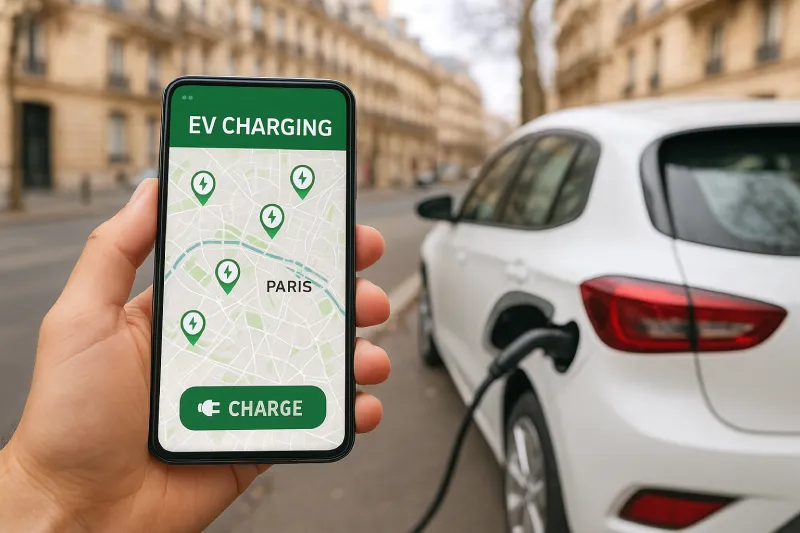
1. Chargemap: The Most Comprehensive Coverage
Best for: First-time visitors and comprehensive planning
Chargemap stands out as the most popular EV charging app in Europe, and for good reason. With coverage of over 60,000 charging stations across France, it offers the most extensive database available to EV drivers.
Key Features:
- Community-driven updates with photos and recent user comments
- Detailed filter options (charging speed, connector type, accessibility)
- Chargemap Pass for unified payment across multiple networks
- Offline map download for areas with poor internet connection
- Multi-language support including English
Pricing Structure:
- Free app download
- Chargemap Pass: Optional RFID card (€19.90 one-time fee)
- Pay-as-you-go charging rates vary by network
Tourist-Friendly Advantage: The app’s community features are invaluable for tourists. Recent user photos help you identify stations easily, and comments often include helpful tips like “best café nearby” or “parking can be tricky here.” The English interface makes it accessible for international visitors who don’t speak French.
Where Chargemap Excels: Perfect for tourists exploring rural areas or lesser-known regions of France. The app’s comprehensive coverage means you’ll rarely find yourself without charging options, even in remote areas of Provence or the French Alps.
2. PlugShare: The Social Network for EV Drivers
Best for: Community insights and home charging options
PlugShare combines the functionality of a charging station locator with the social aspects of a travel community. It’s particularly popular among international travelers due to its global coverage and active user base.
Key Features:
- Trip planner with range anxiety calculator
- Check-in feature to see real-time station occupancy
- Extensive user reviews and tips
- Home charger sharing network
- Available in multiple languages
What Makes It Tourist-Friendly: The trip planner feature is a game-changer for tourists. Simply input your starting point and destination, and PlugShare will suggest charging stops along your route based on your vehicle’s range. The check-in feature helps you avoid wasted trips to occupied stations.
Unique Advantage: PlugShare’s home charging network allows you to find local residents who share their private chargers with travelers. This feature can be particularly useful in rural areas or for overnight charging at reasonable rates.
3. Izivia (formerly Corri-Door): The Highway Specialist
Best for: Long-distance travelers on French highways
If your French itinerary includes significant highway driving, Izivia should be on your phone. This network, operated by EDF (France’s largest electricity company), specializes in fast-charging stations along major motorways.
Key Features:
- 350+ fast-charging stations on French highways
- Charging speeds up to 350 kW
- Subscription options for frequent users
- Direct payment without external cards
- Real-time availability status
Pricing Options:
- No subscription: Pay-as-you-go rates
- Izivia Pass: Monthly subscription with reduced rates
- Highway stations typically €0.50-0.70 per kWh
Why Tourists Choose Izivia: Fast charging capability means you can add 200km of range in just 15-20 minutes, perfect for quick pit stops during long drives. The stations are strategically located at highway rest areas with amenities like restaurants and restrooms.
Pro Tip for Tourists: Download the Izivia app before your trip and set up payment methods in advance. This saves precious time at charging stations and ensures you’re ready to go when you arrive.
4. Shell Recharge: The International Traveler’s Choice
Best for: Visitors from the UK and international travelers
Shell Recharge (formerly NewMotion) offers the advantage of being widely recognized internationally. If you’re already a Shell Recharge user in your home country, your account will work seamlessly in France.
Key Features:
- Access to 700,000+ charge points across Europe
- Single monthly invoice for all charging sessions
- Compatible with most major charging networks in France
- No activation fees at most stations
- English-language customer support
Coverage in France: While Shell Recharge doesn’t operate its own extensive network in France, the app provides access to multiple partner networks including Ionity, Allego, and many municipal networks.
Tourist Benefits: The unified billing system is ideal for business travelers or those who prefer consolidated expenses. No need to juggle multiple apps or payment cards—everything appears on one monthly statement.
Considerations: Shell Recharge works best in urban areas and along major routes. For rural exploration, consider pairing it with Chargemap for backup options.
5. Electromaps: The Budget-Conscious Option
Best for: Cost-conscious travelers and detailed station information
Electromaps has rapidly gained popularity among EV drivers looking for transparent pricing and community-verified information. The app focuses on providing accurate, up-to-date data about charging station functionality.
Key Features:
- Verified charging station data
- Price comparison across different networks
- Free basic version with ads
- Premium version (€4.99/month) removes ads and adds features
- Detailed technical specifications for each station
What Sets It Apart: Electromaps uses a verification system where stations are checked by multiple users before being marked as “verified.” This reduces the frustration of arriving at non-functioning stations, a common problem for tourists unfamiliar with local networks.
Pricing Transparency: The app clearly displays charging costs before you start your session, helping you avoid unexpected expenses. This transparency is particularly valuable for tourists managing travel budgets.
How to Choose the Right App for Your French Road Trip
With multiple excellent options available, how do you decide which app to use? Consider these factors based on your travel style:
For City Exploration (Paris, Lyon, Marseille)
Recommended: Chargemap + PlugShare
Urban charging often involves slower, destination charging at hotels, shopping centers, and parking garages. Chargemap’s comprehensive coverage and PlugShare’s community insights will help you find convenient charging spots near your activities.
For Highway Road Trips
Recommended: Izivia + Shell Recharge
Long-distance highway travel requires fast charging capability. Izivia’s highway network combined with Shell Recharge’s broad compatibility ensures you’ll always have fast-charging options available.
For Budget Travel
Recommended: Electromaps + Chargemap
Both apps offer free versions and help you compare prices across different networks. This combination gives you the flexibility to choose the most economical charging options.
For Rural and Wine Region Touring
Recommended: Chargemap + PlugShare
Rural areas require apps with extensive coverage and community verification. These apps will help you find stations in smaller towns and villages throughout regions like Burgundy, Loire Valley, or Provence.
Essential Tips for Using Charging Apps in France
1. Download Multiple Apps Before You Arrive
Don’t rely on a single app. Network coverage varies by region, and having backup options ensures you’re never stranded. Download at least two apps and create accounts before your trip.
2. Set Up Payment Methods in Advance
Many charging networks require pre-registration and payment method setup. Complete this process while you have stable internet and time to troubleshoot any issues, not when you’re at 10% battery on a highway.
3. Enable Offline Maps
Both Chargemap and PlugShare offer offline map downloads. This feature is invaluable in rural areas with spotty mobile coverage.
4. Check Recent User Reviews
Always read the most recent comments (within the last 2-4 weeks) before relying on a station. Community updates often highlight temporary issues like broken connectors or maintenance work.
5. Plan Charging Stops Around Meals
France’s excellent food culture makes charging stops the perfect opportunity to enjoy a meal. Look for charging stations near restaurants using the apps’ filtering features. A 45-minute lunch is plenty of time for a meaningful charge.
6. Understand Pricing Structures
French charging stations use different pricing models:
- Per kWh (most common, €0.30-0.70 per kWh)
- Per minute (less common, varies by charging speed)
- Flat session fee + per kWh
- Free (increasingly rare, mainly at IKEA and some shopping centers)
Always check the pricing structure in the app before starting your charging session.
7. Verify Connector Compatibility
Most stations in France use Type 2 (AC) and CCS (DC) connectors, which are standard across Europe. However, always verify your vehicle’s connector type in the app’s filter settings to avoid arriving at an incompatible station.
Common Challenges and Solutions for Tourists
Challenge 1: Language Barriers
Solution: All recommended apps offer English interfaces. Additionally, many charging stations have multilingual screens. If you encounter a French-only interface, most apps allow you to start and stop charging remotely without using the station’s screen.
Challenge 2: Multiple Payment Methods
Solution: Use apps with unified payment systems like Shell Recharge or purchase a Chargemap Pass. This reduces the need to carry multiple RFID cards or download numerous individual network apps.
Challenge 3: Station Occupied
Solution: PlugShare and Chargemap show real-time check-ins. Before driving to a station, check if someone recently checked in. Also, identify alternative stations within a few kilometers using the app’s map view.
Challenge 4: Unexpected Station Downtime
Solution: Always plan charging stops with a backup option within 10-15km. Check recent user comments for reliability information. If a station frequently appears in negative reviews, skip it.
Challenge 5: Rural Areas with Limited Coverage
Solution: In remote regions, charge opportunistically whenever you pass a station, even if you don’t need a full charge. The “top-up” strategy prevents range anxiety in areas with sparse charging infrastructure.
Regional Charging App Recommendations
Different regions of France have unique charging landscapes. Here’s what works best by area:
Paris and Île-de-France
The capital region offers excellent charging infrastructure but can be crowded. Use PlugShare’s check-in feature to monitor station availability. Chargemap excels here due to extensive coverage of street charging and parking garage stations.
French Riviera (Nice, Cannes, Monaco)
Coastal areas have good coverage but high demand during summer. Book hotels with charging facilities through PlugShare’s accommodation filter. Izivia works well for the highway connecting these cities.
Lyon and Auvergne-Rhône-Alpes
Excellent urban infrastructure in Lyon, but rural alpine areas require planning. Chargemap’s offline maps are essential for mountain passes. Check ski resort charging options on PlugShare before winter trips.
Bordeaux and Wine Country
Moderate charging infrastructure. Plan routes carefully and consider home charging through PlugShare’s network. Many wineries are beginning to offer charging for visitors—check recent Chargemap comments.
Provence and Lavender Fields
Rural areas with growing infrastructure. Download offline maps and plan charging around meal stops in larger towns like Avignon or Aix-en-Provence.
French Alps Ski Resorts
Increasing charging availability at major resorts. Use Chargemap to identify resort charging options in advance. Consider overnight charging at accommodations rather than relying solely on public stations.
Beyond the Apps: Additional Resources for EV Tourism in France
While apps are your primary tool, these resources enhance your EV travel experience:
FranceChargeFinderOnline
Your comprehensive directory of charging locations across France. Unlike mobile apps, this website offers detailed regional guides, user tips, and curated lists of tourist-friendly charging spots. Perfect for pre-trip planning and discovering charging options in your destination area.
ABRP (A Better Route Planner)
While not a charging network app, ABRP specializes in route planning specifically for EVs. It integrates with Chargemap and other networks to create optimal routes based on your vehicle’s specific range and charging characteristics.
Le Boncoin and Airbnb
When booking accommodations, specifically search for properties with EV charging. Many French hosts now advertise charging facilities, providing convenient overnight charging that saves time and money.
The Future of EV Charging Apps in France
The French government has committed to installing 100,000 additional public charging points by 2030. This expansion will make app-based navigation even more critical as the network grows.
Emerging trends to watch:
- Increased integration between apps and vehicle navigation systems
- AI-powered route planning that considers charging costs, wait times, and your schedule
- Reservation systems becoming standard at fast-charging stations
- Dynamic pricing based on grid demand and renewable energy availability
Your Action Plan: Getting Started
Ready to charge across France? Follow this checklist:
One Week Before Your Trip:
- Download Chargemap, PlugShare, and one highway-focused app (Izivia or Shell Recharge)
- Create accounts and verify email addresses
- Add payment methods to each app
- Download offline maps for your planned route regions
- Research charging options at your accommodations
Upon Arrival in France:
- Test your first charging session at a low-stress location (like your hotel)
- Verify that payment methods work correctly
- Familiarize yourself with app interfaces while you have time
- Plan your first day’s route with charging stops identified
During Your Trip:
- Check apps each morning to verify planned charging stops are operational
- Read recent user comments before relying on a station
- Charge during meal breaks and sightseeing stops
- Keep at least 20% buffer charge for unexpected detours
Conclusion: Embrace the Electric French Road Trip
Driving an electric vehicle through France is not only feasible—it’s increasingly becoming the preferred way to explore this beautiful country. With proper app selection and preparation, charging becomes just another pleasant part of your French adventure, not a source of stress.
The key is choosing the right combination of apps for your specific travel style, setting them up properly before departure, and approaching charging as an opportunity to explore French towns, enjoy meals, and discover hidden gems you might otherwise pass by.
Remember: every EV driver was once a beginner. The French charging network is designed to be user-friendly, and the community of EV drivers is remarkably supportive. Don’t hesitate to ask for help through app comments or at charging stations—you’ll find fellow EV enthusiasts happy to share their knowledge.
Ready to plan your electric French adventure? Start by exploring charging options in your destination regions on FranceChargeFinderOnline, download your essential apps, and get ready for an unforgettable journey through France’s stunning landscapes, historic cities, and charming villages—all powered by clean electricity.
Frequently Asked Questions
Do I need to download a different app for each charging network in France?
No, you don’t need separate apps for each network. Universal apps like Chargemap and Shell Recharge provide access to multiple networks through a single interface. However, having 2-3 well-chosen apps ensures backup options.
Can I pay with a credit card directly at charging stations in France?
Some newer stations accept direct credit card payment, but this is not universal. Most stations require either an RFID card, a specific network app, or a universal charging app. Always have an app-based payment method ready.
Are charging apps in France available in English?
Yes, all major charging apps (Chargemap, PlugShare, Shell Recharge, Electromaps, and Izivia) offer English-language interfaces, making them accessible to international tourists.
How much does it cost to charge an EV in France using these apps?
Costs vary by network and location. Expect to pay €0.30-0.50 per kWh for standard public charging and €0.50-0.70 per kWh for fast highway charging. Apps show pricing before you start charging.
What happens if a charging station doesn’t work when I arrive?
Use the app to report the issue, check for alternative nearby stations (most apps show multiple options), and read recent user comments to avoid problematic stations in the future. Always have a backup station identified within 10-15km.
Is free EV charging still available in France?
Free charging is becoming rare, but some locations still offer it, particularly IKEA stores, certain shopping centers, and occasional municipal stations. Chargemap’s filter feature helps identify free charging options.
Can I reserve charging stations in advance?
Some premium networks and apps now offer reservation features, though this is not yet widespread in France. Izivia and some Ionity stations support reservations through their respective apps.
Will my UK or US charging app work in France?
Many international apps like Shell Recharge and PlugShare work across borders. However, download France-specific apps like Chargemap and Izivia for comprehensive coverage and better rates.

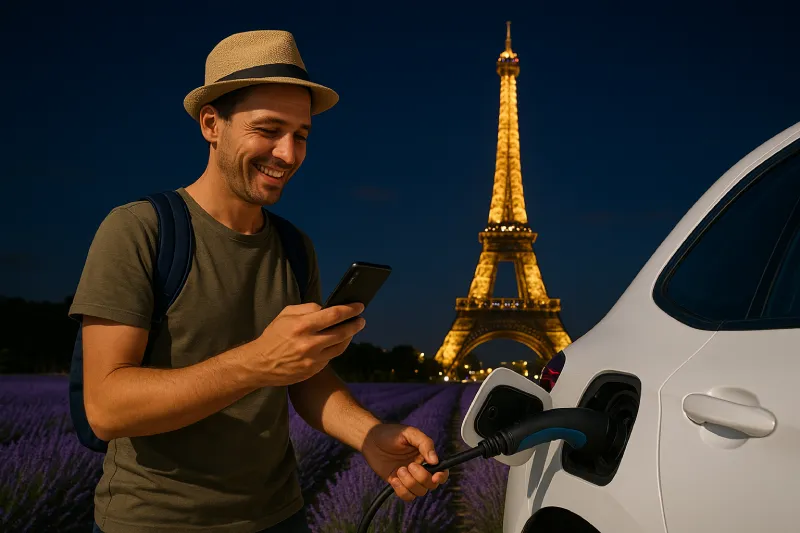
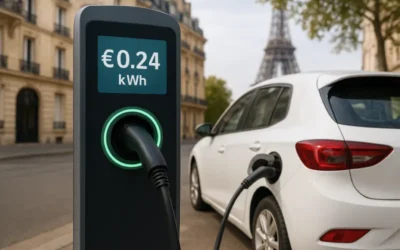
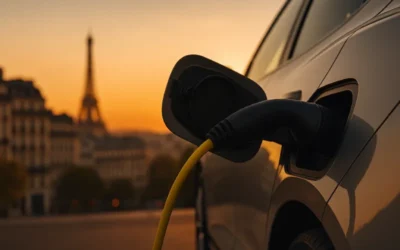
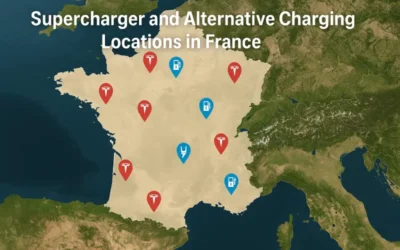
Leave a Reply